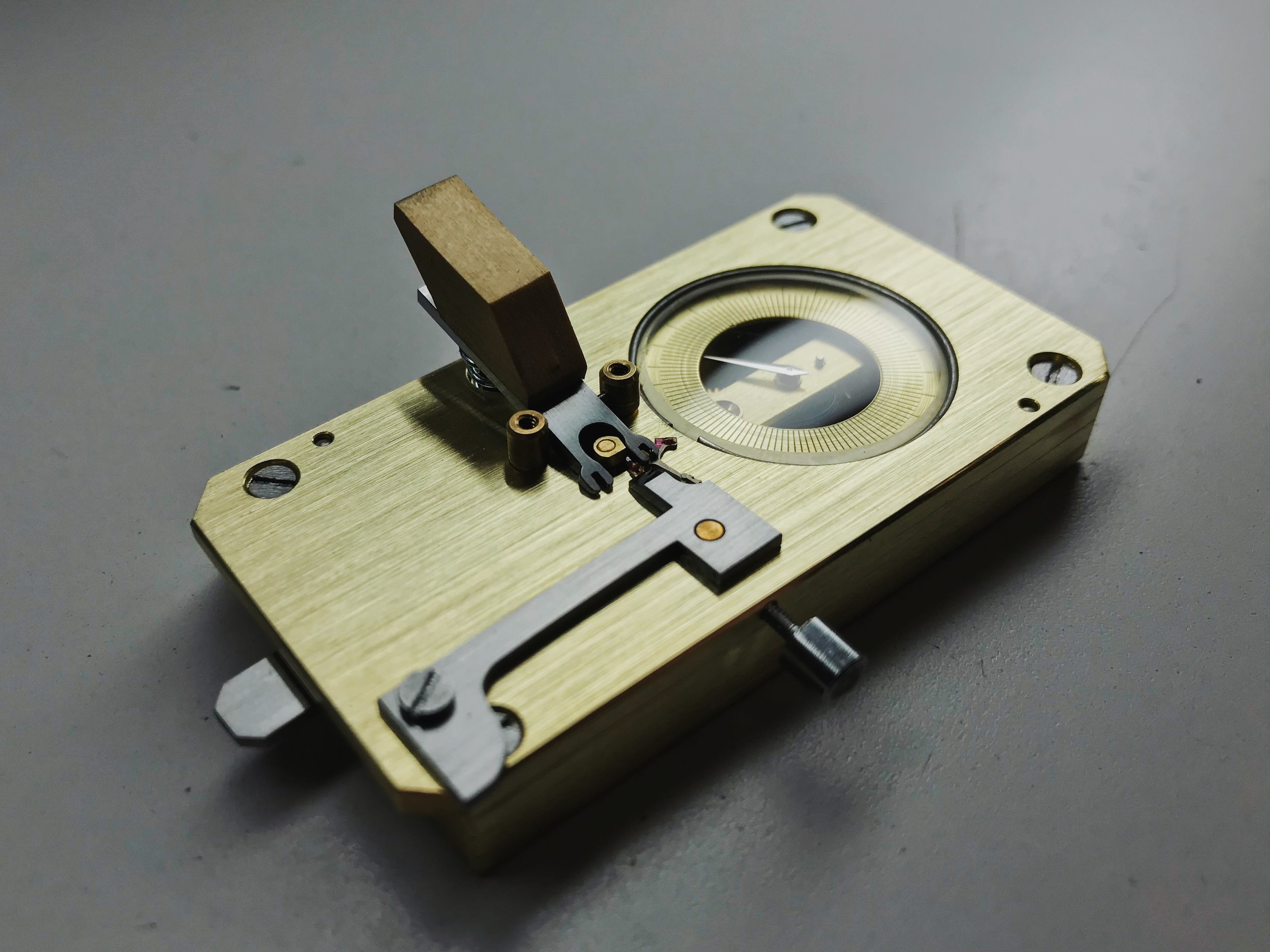Beveling Practice

The escapement meter project is a showcase for our micromechanics skills, both in terms of fabrication and finishing.
Hand-done beveling, or anglage as it's known in the watchmaking world, is the hallmark of a finely made timepiece. I talked about it previously on my school watch, but the escapement meter includes new and more complicated challenges.
Interior corners are the trickiest parts to bevel on any timepiece, and a sharp corner is the indicator of superior hand finishing. Modern CNC mills have a round profile, and simply can't form internal bevels that meet at a crease. As with any bevel, it must be flat, even and equal in size to every other bevel on the workpiece.
This is my first time beveling steel, and my previous technique of starting the bevel with a graver doesn't "cut" it anymore. The traditional way to form a bevel is with a file, and that's what I used on the escapement meter parts.
Bevels can only be as crisp as the surfaces they connect, so it's a requirement to file flat and square on the hammer itself before finishing.
I filed, lapped and burnished each bevel on the steel components. This brings a near-polish to the bevel, but not a true polish. Since this is a tool, I don't mind leaving them at this state, but I may return to finish the finish later.
Watchmaking student at the Lititz Watch Technicum, formerly a radio and TV newswriter in Chicago.









